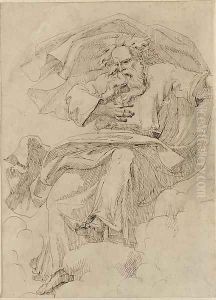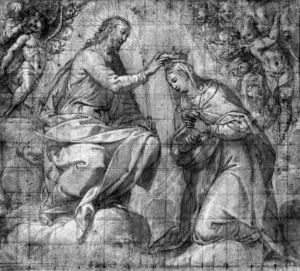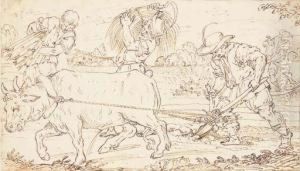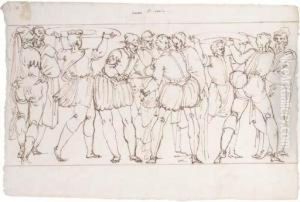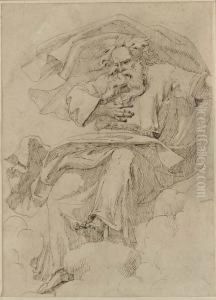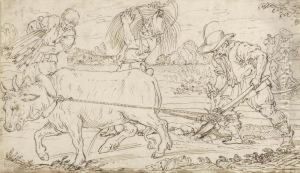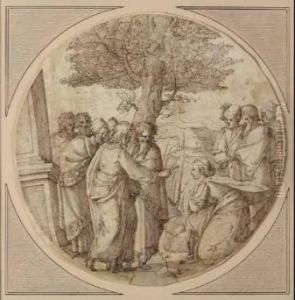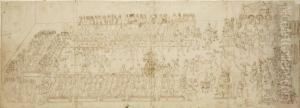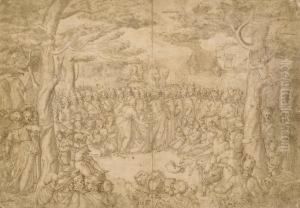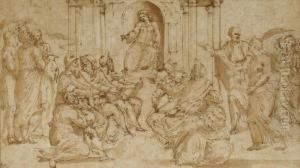Ercole Setti Paintings
Ercole Setti was an Italian painter and designer of the late Renaissance period, born in Parma in 1530 and died in 1617. He was a student of the prominent artist Parmigianino and later became a court artist for the Farnese family, who were influential patrons in Parma and the surrounding regions. Setti is known for his detailed and elaborate architectural fantasies, which often incorporated ruins and classical elements, as well as his frescoes and oil paintings that exhibit a Mannerist style.
During his career, Setti worked on various important commissions, including decorative schemes for palaces and churches. His work was characterized by a precise attention to detail and a strong sense of perspective, which he used to create depth in his compositions. Despite his evident skill and contributions to the Italian art scene of his time, Setti's work was somewhat overshadowed by his contemporaries, and as a result, he is not as widely recognized today as other artists of the Renaissance.
Setti's artistic output includes a number of frescoes in Parma, particularly in the Church of San Sepolcro and the Palazzo del Giardino, which was part of the ducal palace complex. His paintings often depicted mythical or allegorical scenes, set against the backdrop of intricate and fantastical architecture, hinting at the influence of his teacher Parmigianino and the broader Mannerist movement that sought to push the boundaries of classical art forms.
Very little documentation survives about Setti's life, which has made it difficult for art historians to piece together a comprehensive biography. However, his existing works continue to be studied and appreciated for their contribution to the art of the late Renaissance and the transition into Mannerism. Despite the challenges in piecing together his life story, Ercole Setti remains an intriguing figure in the history of Italian art.
